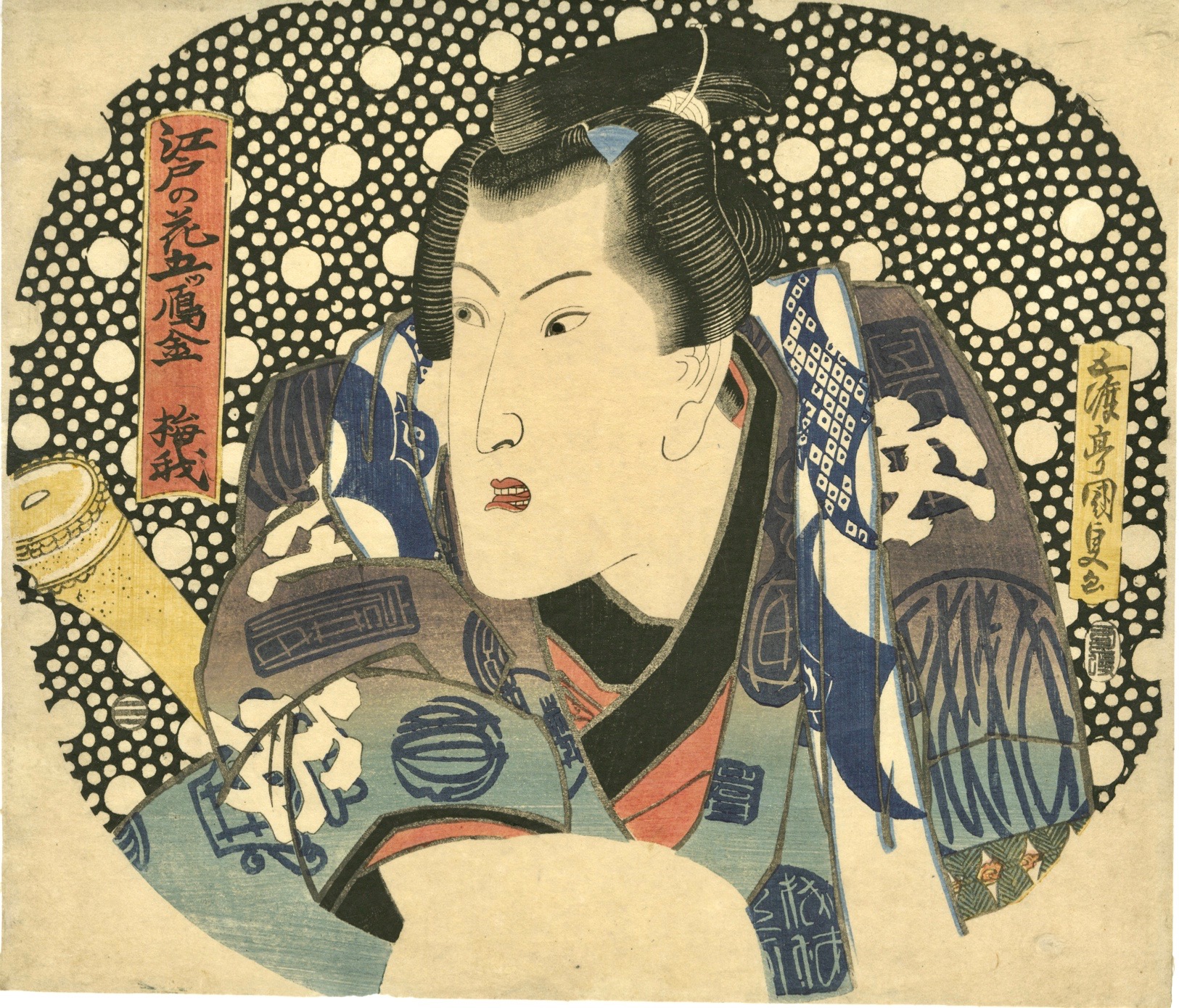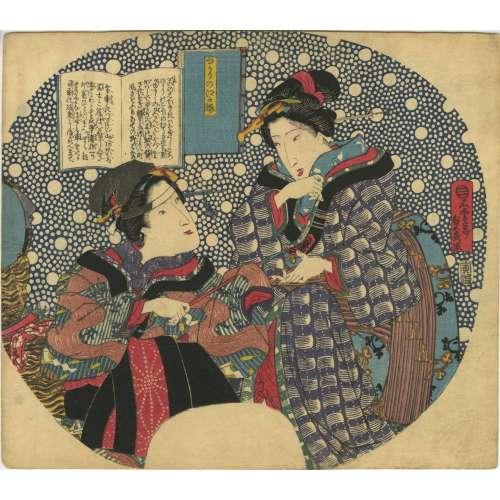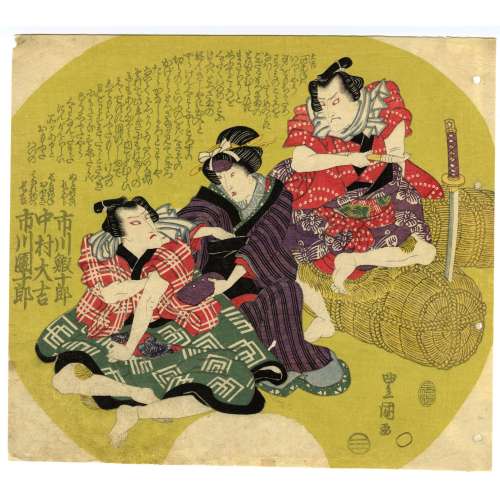Artist:
Utagawa Sadahide [歌川 貞秀], a.k.a. Gountei Sadahide [五雲亭 貞秀] (1807 – c. 1878/9).
Signed:
Gountei Sadahide ga [五雲亭貞秀画]
Pubisher:
Ibaya Senzaburō [伊場屋仙三郎] (Japanese, 1815 – 1869)
Date-aratame seal: Bunsei 13 / Tenpō 1 (1830).
Ref: Ritsumeikan University #
Z0172-587.
Title:
Yukari no Edo-zakura [ゆかりの江戸桜], often translated into English as 'The Flower of Edo', is a one-act kabuki play
Sukeroku, written by
Tsuuchi Han'emon (fl. 1701 – 1743) under the supervision of
Tsuuchi Jihei II (1673 – 1760 ) at the beginning of the 18th century. From the beginning of the 19th century, the play was performed in the style of katōbushi.
助六所縁江戸桜(すけろくゆかりのえどざくら。「助六」– one of the main melodies in
katōbushi (河東節) type of
jōruri [浄瑠璃]. For a detailed explanation in Japanese, see also
HERE).
Plot: In search of the stolen
Minamoto clan's precious sword called
Tomokirimaru, Soga Gorō (historical
Soga Tokimune [曾我時致], 1174 – 1193) came to a Yoshiwara brothel under the disguise of a debaucher named
Hanagawado Sukeroku. His elder brother, Soga Jūrō (historical
Soga Sukenari [曾我祐成], 1172 – 1193) ), has assumed the guise of a wine vendor Shinbei. The character who had the Tomokirimaru sword was Ikyū (historical
Iga no Heinaizaemon, a
Tiara clan's ally), see
SVJP-0164.2014.
A series of three prints is dedicated to a katōbushi performance of the
Soga-themed plays.
|
Yukari no Edo-zakura |
The tatami night robe of Iwao |
Tangled Hair and the Evening Braided Hat |
They all have a background of hail patterns (
Arare-ko-mon) [霰小紋], similar to Kunisada’s
Iwai Kumesaburō II as An no Heibei [
SVJP-0304.2019], see below.




